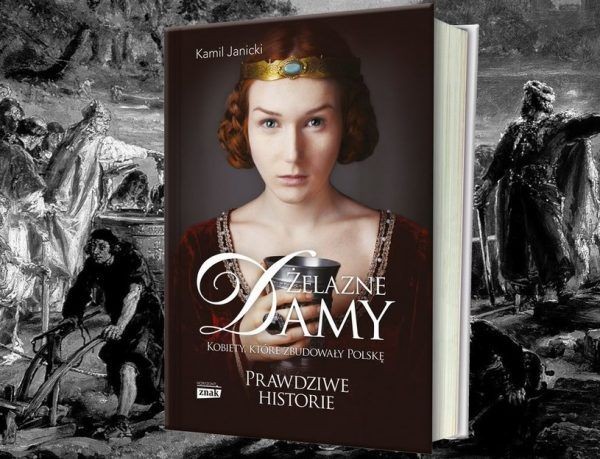"He married a Hungarian woman, with whom he had a son Bezprym, but he also chased her away". This is all that the sources say about the second wife of Bolesław the Brave. Could the identity of the mysterious princess have just been discovered?
The quoted account comes from the chronicle of Bishop Thietmar - one of the basic sources of knowledge about the reign of the first Polish king. The author mentioned in his extensive text about all four wives of Brave. However, he devoted only single sentences to the first two. They were short marriages and ended with the unceremonious disposition of partners.
The latter relationship in particular raises many questions , probably concluded in 986. He gave birth to the ruler's firstborn son, which makes the expulsion of his mother particularly shocking . Moreover, the source does not make it possible to clearly indicate whose daughter she was and what was the name of the unfortunate ruler.
A thicket of doubts
Various ideas have been formulated about this. Most often, based on much later sources, it was indicated that she was the daughter of the Hungarian prince Geza - the father of Saint Stephen. This explanation, however, was repeatedly questioned. The author of the Pedigree of the first Piasts doubted them Kazimierz Jasiński, as well as the famous Hungarian medievalist, György Györffy. The latter pointed out that Thietmar knew the figure of Prince Giza and provided a lot of details about him in another part of his chronicle.

Bolesław the Brave. He had no mercy towards his enemies… and towards his wives (public domain).
If in this particular case he could not indicate the origin of the Brave's wife (and he did so in the presence of all the other spouses of the ruler!), Then apparently she was "the offspring of one of the Arpads, whose name Thietmar simply did not know." The sprawling power structures in the country of Hungarians are poorly understood, as is the genealogy of the first Arpads. As a result, Brave's half settled in literature as the mysterious "N.N".
Questions and arguments
A new solution to the mystery was proposed by the Gdańsk medievalist and the author of the recently published biography of Prince Bezprym - professor Błażej Śliwiński. He combined a number of premises that had already been discussed in the literature before. He pointed to the interests of Mieszko I around 986 (the marriage was concluded during the great expansion of the Piasts to the south, at the expense of the Czechs) and the political situation in Hungary at that time.

Learn about the fascinating history of women who built Poland in the darkness of the Middle Ages. Ruthless, ambitious, talented. Kamil Janicki's "Iron Ladies" is now on sale !
Gejza did not rule the entire country directly, but only its northwestern part. In the north-east, the Transylvanian princes ruled with considerable independence. "It is logical to guess that for the purposes of implementing [Mieszko's] political plan, the relationship with the family of the rulers of Transylvania [rather than with Geysa]" - said Śliwiński. He also recalled the existence at that time in Hungary of a hillfort known as Bezprem (now Veszprem). Actually the same name was given to the son of Brave, so it is possible that the castle was founded or was managed by his ancestor or a relative. It is impossible to confirm this theory, but it is known that Gejza's wife, Sarolta, who came from ... the dynasty of the Transylvanian dynasty, had close ties with the center.
Name of the duchess
Based on extensive argumentation in the book Bezprym. The firstborn son of the first king of Poland Śliwiński came to the following conclusions:
Bolesław the Brave's Hungarian wife most likely came from the Transylvanian princes, she was the daughter of Gyula the Elder, son of Horek, and therefore also Sarolta's sister. (...) Her sister named Karolda is known from the message "Gesta Hungarorum". Nothing more is known about it from the sources, it is the only mention of it at all.

News is based on the book by Błażej Śliwiński entitled "Bezprym. The firstborn son of the first king of Poland ”(Krakow 2014).
According to the author, it was most probably the aforementioned Karold who was the second wife of Brave and the mother of his son. Hungarian historians claim that Karolda was the wife of one of the chief commanders of Saint Stephen's army - the influential mighty Doboka - but this does not in any way undermine the findings of Professor Śliwiński. After all, it cannot be ruled out that the young princess had a stormy and short-lived relationship with the heir to the Polish throne earlier. But was it really so?
***
Both this and many other interesting, ground-breaking and often controversial findings are quoted by the author in his latest book "Iron Ladies. The Women Who Built Poland. ”
The source of the above news is:
- Błażej Śliwiński, Bezprym. The firstborn son of the first king of Poland , Avalon 2014.
I also used:
- György Györffy, Saint Stephen. King of Hungary , Rhythm, 2003.
- Kazimierz Jasiński, Pedigree of the first Piasts , Poznań Society of Friends of Sciences, 2004.
Historical news. What's the matter?
 | The "historical news" column is the latest news from the world of history. We are looking for missed and concealed discoveries of Polish (and not only) scientists. We show that there is always something going on in research on the past. |
 | Our news is short and accessible. On 2-3 thousand signs, we will summarize for you the discoveries that scientists have made on dozens of pages of hermetic works. We only write about what really matters. No boring. |
 | We rely on scientific publications from the last 18 months . In the world of history, news spreads slowly, and academic works reach potential recipients with a long delay. What in other fields ceases to be news after 24 hours in history may be even a year later. |
 | When preparing news, we follow the list of the most prestigious historical periodicals. If you are a publisher or author and would like us to reach for a specific publication - please send it to our editorial office. |
Buy Kamil Janicki's books 30% cheaper:
